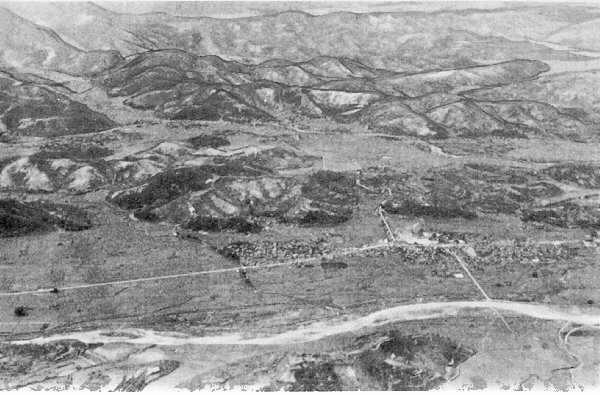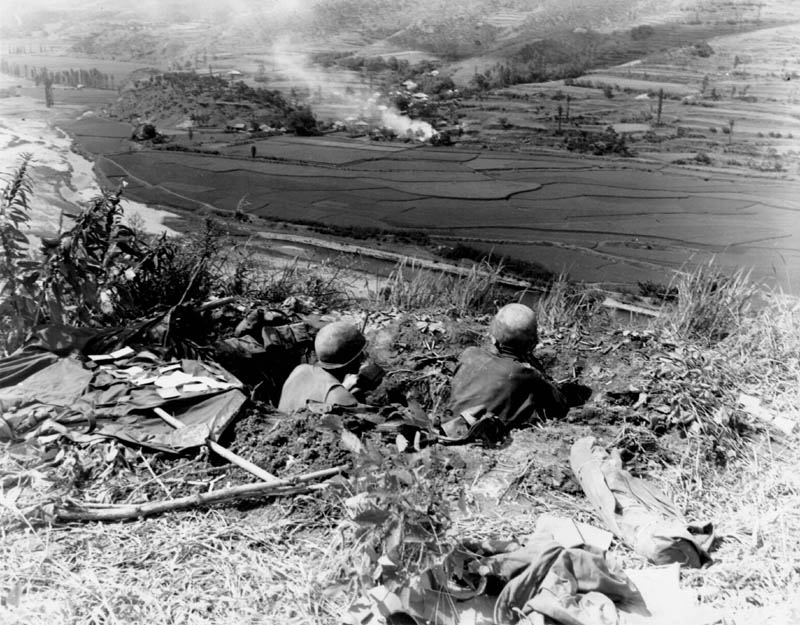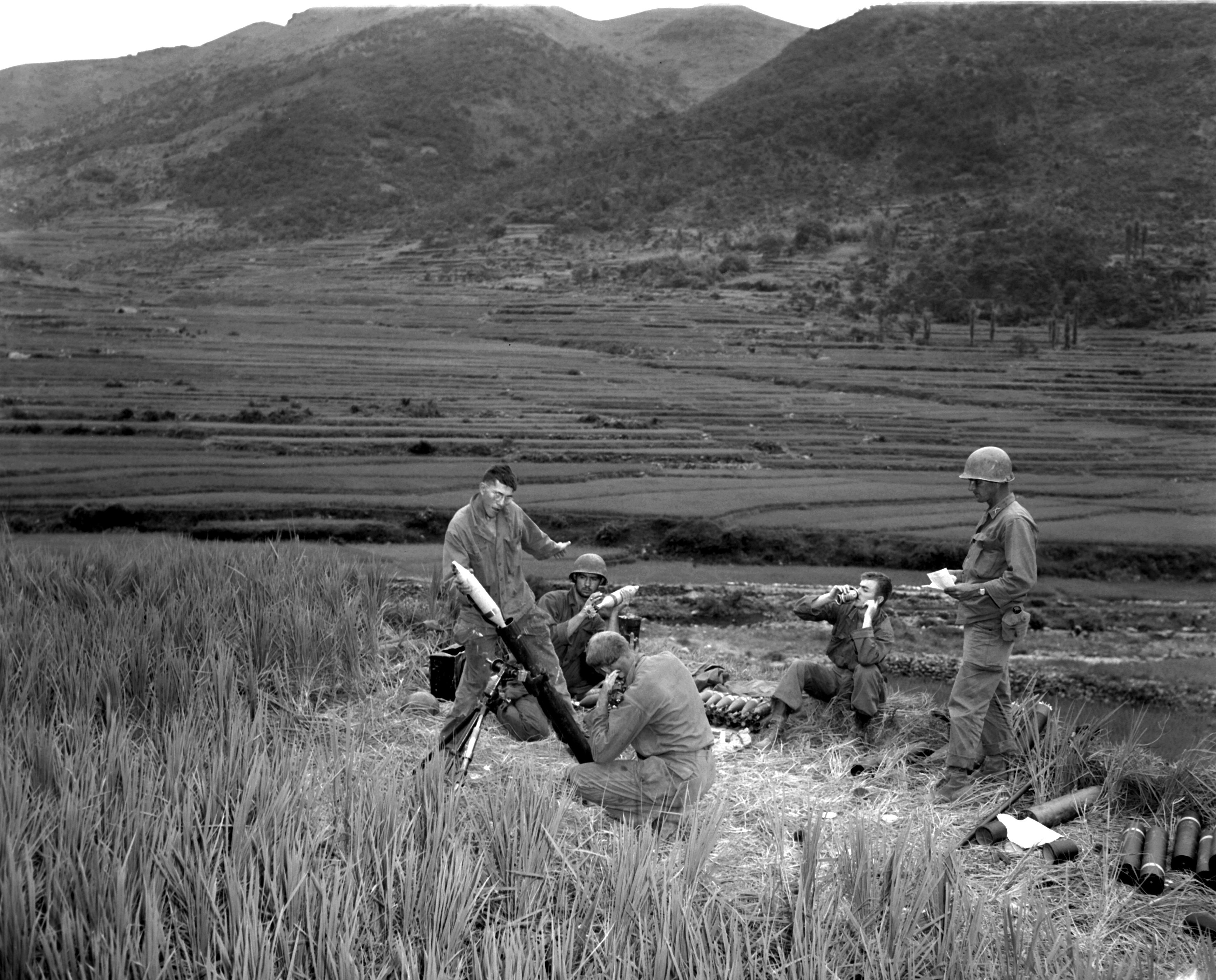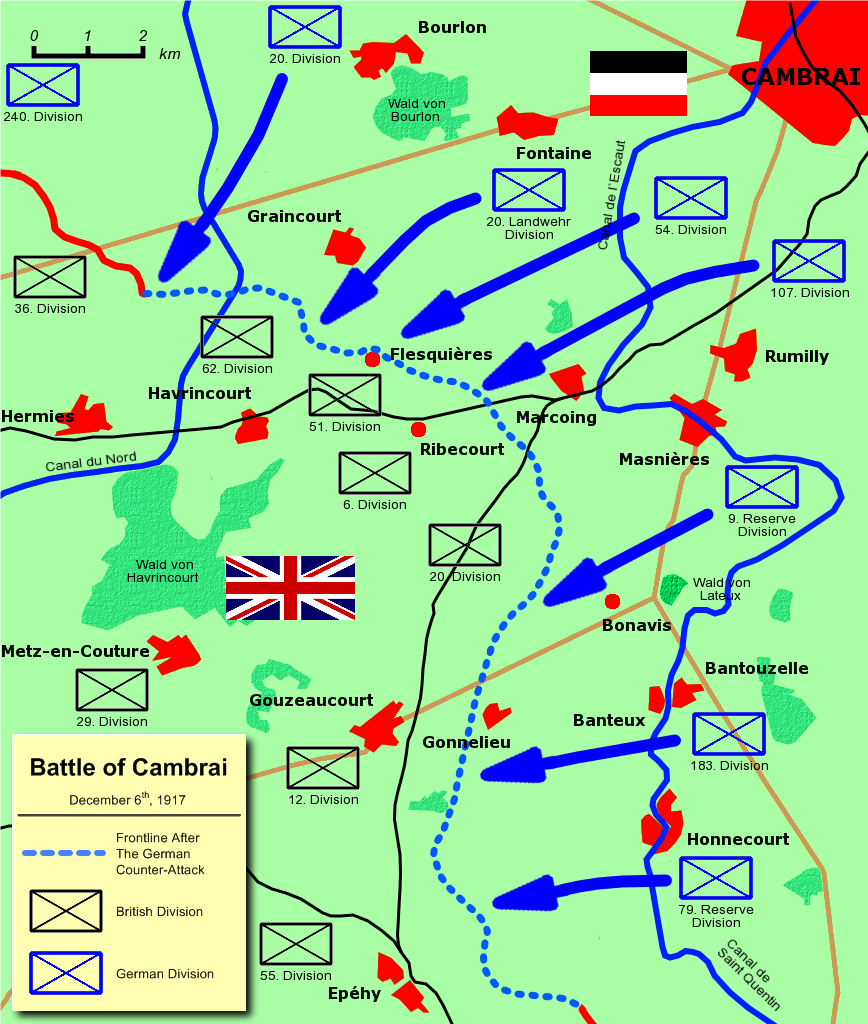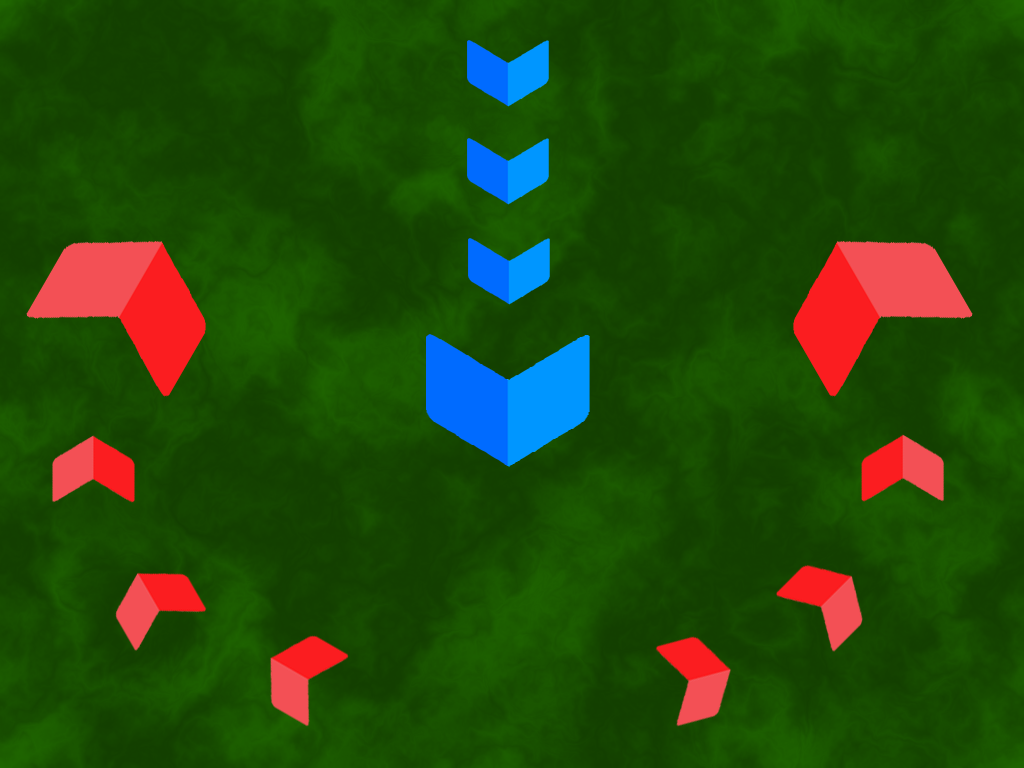|
Battle Of Haman
The Battle of Haman was one engagement in the larger Battle of Pusan Perimeter between United Nations Command (UN) and North Korean forces early in the Korean War from August 31 to September 19, 1950, in the vicinity of Haman County in South Korea. The engagement ended in a victory for the UN after large numbers of United States Army (US) and Republic of Korea Army (ROK) troops repelled a strong Korean People's Army (KPA) attack on the town of Haman. Operating in defense of Masan during the Battle of Masan, the US 24th Infantry Regiment was stretched along a long line on a ridge to the west of the town, at Haman. When the KPA 6th Division attacked the town, the US troops fought to repel their advance in a weeklong battle in which the 24th Infantry performed poorly, and other US reinforcements were brought in to assist in fighting off the attack. Background Pusan Perimeter From the outbreak of the Korean War and the invasion of South Korea by the North, the KPA had enjoyed ... [...More Info...] [...Related Items...] OR: [Wikipedia] [Google] [Baidu] |
Battle Of Pusan Perimeter
The Battle of the Pusan Perimeter ( ko, 부산 교두보 전투) was a large-scale battle between United Nations Command (UN) and North Korean forces lasting from August 4 to September 18, 1950. It was one of the first major engagements of the Korean War. An army of 140,000 UN troops, having been pushed to the brink of defeat, were rallied to make a final stand against the invading Korean People's Army (KPA), 98,000 men strong. UN forces, having been repeatedly defeated by the advancing KPA, were forced back to the "Pusan Perimeter", a defensive line around an area on the southeastern tip of South Korea that included the port of Busan. The UN troops, consisting mostly of forces from the Republic of Korea Army (ROKA), United States, and United Kingdom, mounted a last stand around the perimeter, fighting off repeated KPA attacks for six weeks as they were engaged around the cities of Taegu, Masan, and Pohang and the Naktong River. The massive KPA assaults were unsuccessful in for ... [...More Info...] [...Related Items...] OR: [Wikipedia] [Google] [Baidu] |
Korean People's Army
The Korean People's Army (KPA; ) is the military force of North Korea and the armed wing of the Workers' Party of Korea (WPK). Under the ''Songun'' policy, it is the central institution of North Korean society. Currently, WPK General Secretary Kim Jong-un serves as Supreme Commander and the chairman of the WPK Central Military Commission. The KPA consists of five branches: the Ground Force, the Naval Force, the Air and Anti-Air Force, the Strategic Rocket Forces, and the Special Operation Force. The KPA considers its primary adversaries to be the Republic of Korea Armed Forces and United States Forces Korea, across the Korean Demilitarized Zone, as it has since the Armistice Agreement of July 1953. it is the second largest military organisation in the world, with of the North Korean population actively serving, in reserve or in a paramilitary capacity. History Korean People's Revolutionary Army 1932–1948 Kim Il-sung's anti-Japanese guerrilla army, the ... [...More Info...] [...Related Items...] OR: [Wikipedia] [Google] [Baidu] |
Reserve (military)
A military reserve, active reserve, reserve formation, or simply reserve, is a group of military personnel or units that is initially not committed to a battle by its commander, so that it remains available to address unforeseen situations or exploit sudden opportunities. Such a force may be held back to defend against attack from other enemy forces, to be committed to the existing battle if the enemy exposes a vulnerability, or to serve as relief for troops already fighting. Some of the different categories of military reserves are: tactical reserve, operational reserve, and strategic reserve. A military reserve is different from a military reserve force, which is a military organization composed of military personnel who maintain their military skills and readiness in a long-term part-time commitment to support their country if needed. Military reserve refers to specific trained pre-organized forces operating on an on-call basis from the main military force. Each member acts in ... [...More Info...] [...Related Items...] OR: [Wikipedia] [Google] [Baidu] |
Battle Of Battle Mountain
The Battle of Battle Mountain was an engagement between United Nations Command (UN) and North Korean forces early in the Korean War from August 15 to September 19, 1950, on and around the Sobuk-san mountain area in South Korea. It was one of several large engagements fought simultaneously during the Battle of Pusan Perimeter. The battle ended in a victory for the UN after large numbers of United States Army (US) and Republic of Korea Army (ROK) troops were able to prevent a Korean People's Army (KPA) division from capturing the mountain area. Operating in defense of Masan, the US 25th Infantry Division placed its 24th Infantry Regiment and 5th Infantry Regiment on Sobuk-san to defend its two peaks, P'il-bong and Hill 665, which would later be known as "Battle Mountain." What followed was a month-long struggle with the KPA 6th Division, in which Battle Mountain changed hands 20 times. During the deadlock, neither side was able to secure a definite victory in capturing the mo ... [...More Info...] [...Related Items...] OR: [Wikipedia] [Google] [Baidu] |
Battle Of Komam-ni
The Battle of Masan was an engagement between United Nations Command (UN) and North Korean forces, which took place early in the Korean War between August 5 and September 19, 1950, in the vicinity of Masan and the Naktong River in South Korea. It was part of the Battle of Pusan Perimeter, and was one of several large engagements fought simultaneously. The battle ended in a victory for the UN after large numbers of United States Army (US) troops were able to repel the repeated attacks of two Korean People's Army (KPA) divisions. Operating as the extreme southern flank of the Pusan Perimeter, the US 25th Infantry Division placed its regiments around the South Korean city of Masan, with the 24th Infantry Regiment and 5th Regimental Combat Team based in Haman and nearby Sobuk-san, and the 35th Infantry Regiment based along the Nam River to the west of the city. Throughout the six-week battle, the KPA 6th and 7th Divisions attacked the 25th Division's regiments in an attempt to br ... [...More Info...] [...Related Items...] OR: [Wikipedia] [Google] [Baidu] |
Counteroffensive
In the study of military tactics, a counter-offensive is a large-scale strategic offensive military operation, usually by forces that had successfully halted the enemy's offensive, while occupying defensive positions. The counter-offensive is executed after exhausting the enemy's front line troops and after the enemy reserves had been committed to combat and proven incapable of breaching defenses, but ''before'' the enemy has had the opportunity to assume new defensive positions. Sometimes the counter-offensive can be of a more limited operational maneuver nature, with more limited objectives rather than those seeking attainment of a strategic goal. A counter-offensive as considered by Clausewitz to be the most efficient means of forcing the attacker to abandon offensive plans.p.540, Briggs Counter-offensives can be executed not only on land, but also by the naval forces and air forces. Strategic counter-offensives have been recorded by military historians in many wars t ... [...More Info...] [...Related Items...] OR: [Wikipedia] [Google] [Baidu] |
7th Division (North Korea)
The 12th Infantry Division was a division of the Korean People's Army during the 20th century. Originally, it was the 156th Division (), which was created in November 1948 under ''the Regulation of the Redesignations of All Organizations and Units of the Army'', issued by Central Military Commission on November 1, 1948, basing on the 6th Independent Division, PLA Northeastern Field Army. PLA Period The 156th Division was a Korean-Chinese unit, composing of both Chinese and Korean soldiers and formed part of 43rd Corps. Under the flag of 156th division it took part in the Chinese Civil War. On June 25, 1949, the division was disbanded and reorganized as Jiujiang and Nanchang military sub-district. In February 1950, all Korean soldiers from 156th Division regrouped in Nanchang and moved to North Korea, where it was re-organized as 7th Division(later 12th Division) of the Korean People's Army. Its divisional HQ was re-organized as HQ, 2nd Forestry Engineering Division. As of d ... [...More Info...] [...Related Items...] OR: [Wikipedia] [Google] [Baidu] |
Naktong Defense
The Nakdonggang River or Nakdonggang () is the longest river in South Korea, and passes through major cities such as Daegu and Busan. It takes its name from its role as the eastern border of the Gaya confederacy during Three Kingdoms of Korea, Korea's Three Kingdoms Era. Geography The Nakdonggang flows from the Taebaek Mountains to the South Sea or Korean Strait, which separates Korea from Japan. The river originates from the junction of the Cheolamcheon and Hwangjicheon streams in Dongjeom-dong, Taebaek Administrative divisions of South Korea, city, Gangwon-do (South Korea), Gangwon province. From there to its mouth it winds for about . The width of the river ranges from only a few metres in its upper reaches, to several hundred metres towards its estuary. Major tributaries include the Yeonggang River, Yeong, Geumhogang River, Geumho, and Namgang River (Korea), Nam rivers. Together with its tributaries, the Nakdonggang drains most of North Gyeongsang and South Gyeongsang provin ... [...More Info...] [...Related Items...] OR: [Wikipedia] [Google] [Baidu] |
Logistics At The Battle Of Pusan Perimeter
Logistics in the Battle of Pusan Perimeter (August 4 – September 15, 1950) during the Korean War played a decisive role in the battle. Efficient logistics, the management of personnel and materiel, supported United Nations (UN) supply lines while the North Koreans' routes of supply were steadily reduced and cut off. UN logistics improved throughout the Battle of Inchon and the defeat of the North Korean army at Pusan. UN forces, consisting mostly of troops from the Republic of Korea (ROK), the United States (US), and United Kingdom (UK), enjoyed overwhelming air and sea superiority during the battle. The UN efficiently procured and transported supplies from a large stockpile of materiel in nearby Japan. In contrast, North Korean logistics were hampered by UN interdiction campaigns which slowed the flow of supplies from North Korea to the battle. Though supported logistically by the Soviet Union and China during the battle, North Koreans often had difficulties getting their s ... [...More Info...] [...Related Items...] OR: [Wikipedia] [Google] [Baidu] |
Pusan Perimeter
The Battle of the Pusan Perimeter ( ko, 부산 교두보 전투) was a large-scale battle between United Nations Command (UN) and North Korean forces lasting from August 4 to September 18, 1950. It was one of the first major engagements of the Korean War. An army of 140,000 UN troops, having been pushed to the brink of defeat, were rallied to make a final stand against the invading Korean People's Army (KPA), 98,000 men strong. UN forces, having been repeatedly defeated by the advancing KPA, were forced back to the "Pusan Perimeter", a defensive line around an area on the southeastern tip of South Korea that included the port of Busan. The UN troops, consisting mostly of forces from the Republic of Korea Army (ROKA), United States, and United Kingdom, mounted a last stand around the perimeter, fighting off repeated KPA attacks for six weeks as they were engaged around the cities of Taegu, Masan, and Pohang and the Naktong River. The massive KPA assaults were unsuccessful in for ... [...More Info...] [...Related Items...] OR: [Wikipedia] [Google] [Baidu] |
Eighth United States Army
The Eighth Army is a U.S. field army which is the commanding formation of all United States Army United States Forces Korea, forces in South Korea. It commands U.S. and South Korean units and is headquartered at the Camp Humphreys,Yongsan garrison move pushed back to 2019 in the Anjeong-ri of Pyeongtaek, Pyeongtaek, South Korea. It is the only field army in the U.S. Army. History World War II The unit first activated on 10 June 1944 in the United States, under the command of Lieutenant General Robert Eichelberger. The Eighth Army took part in many of the amphibious landings in the Southwest Pacific Theater of World War II, eventually participating in no less than sixty of them. The first mission of the Eighth Army, in September 1944, was to ta ...[...More Info...] [...Related Items...] OR: [Wikipedia] [Google] [Baidu] |
Double Envelopment
The pincer movement, or double envelopment, is a military maneuver in which forces simultaneously attack both flanks (sides) of an enemy formation. This classic maneuver holds an important foothold throughout the history of warfare. The pincer movement typically occurs when opposing forces advance towards the center of an army that responds by moving its outside forces to the enemy's flanks to surround it. At the same time, a second layer of pincers may attack the more distant flanks to keep reinforcements from the target units. Description A full pincer movement leads to the attacking army facing the enemy in front, on both flanks, and in the rear. If attacking pincers link up in the enemy's rear, the enemy is encircled. Such battles often end in surrendering or destroying the enemy force, but the encircled force can try to break out. They can attack the encirclement from the inside to escape, or a friendly external force can attack from the outside to open an escape rout ... [...More Info...] [...Related Items...] OR: [Wikipedia] [Google] [Baidu] |
